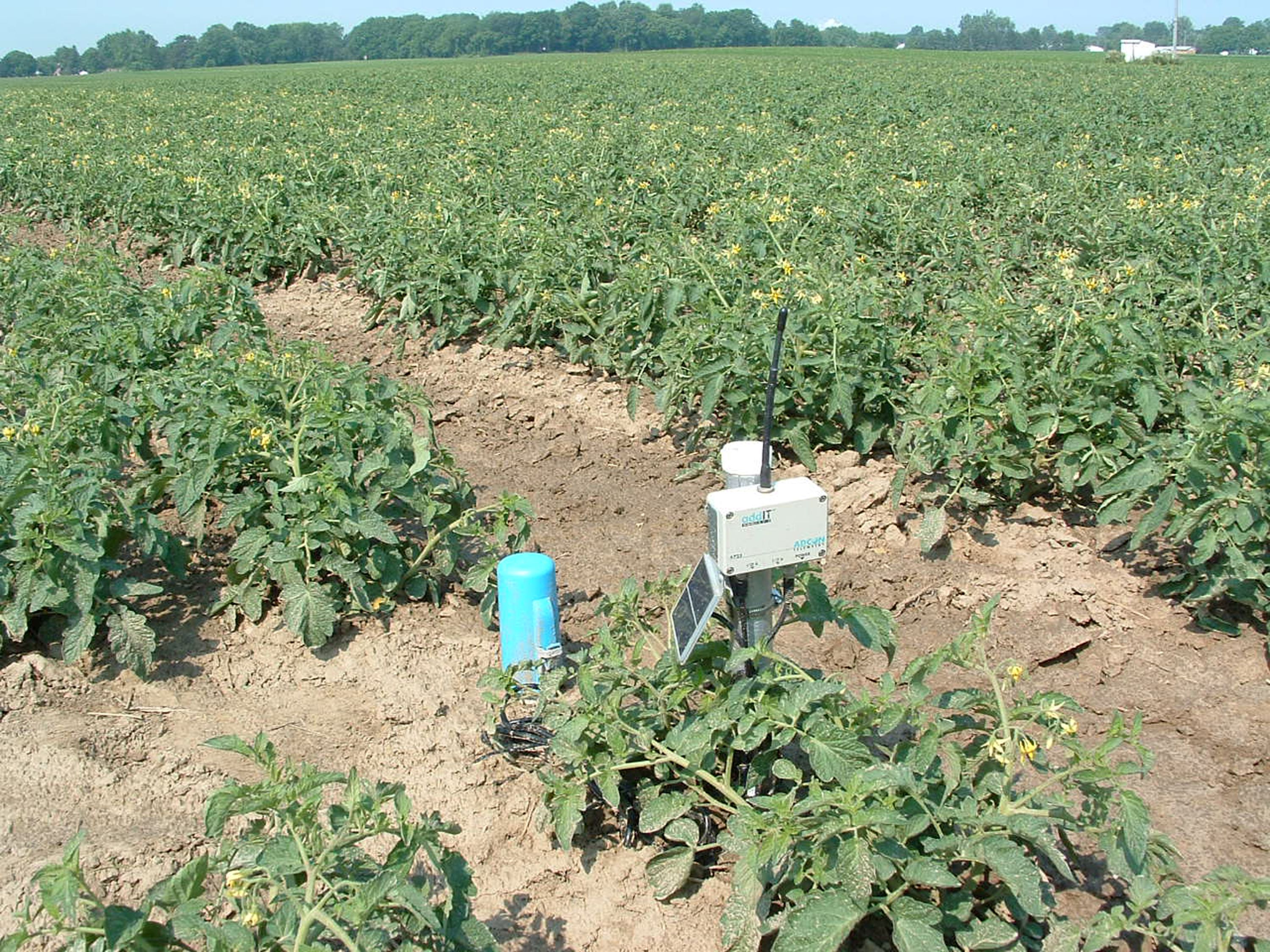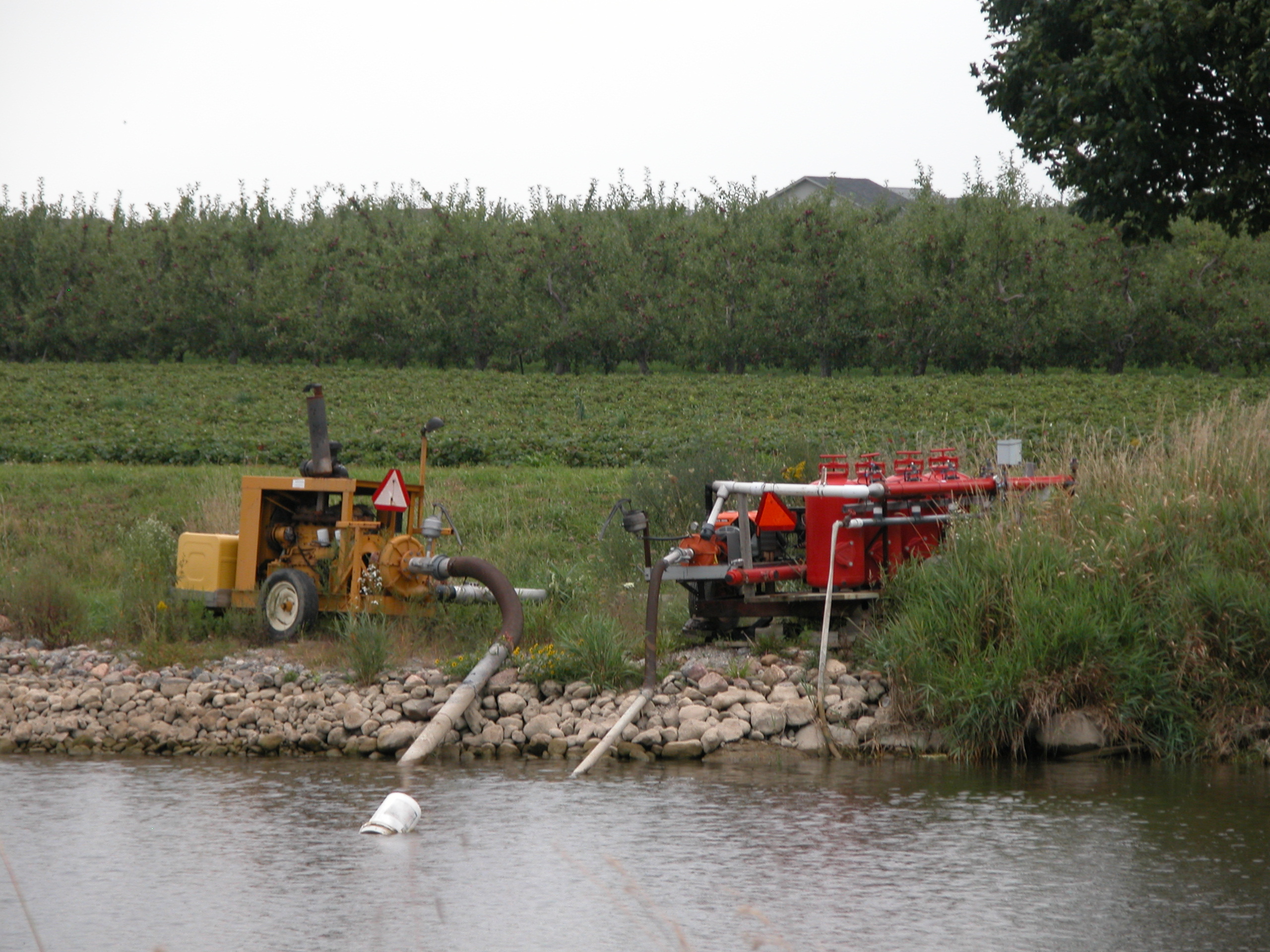Irrigation during water shortages
Learn how to develop irrigation and contingency plans to prepare for water shortages. This technical information is for farmers who irrigate crops.
ISSN 1198-712X, Published April 2025
Introduction
Efficient irrigation practices promote a sustainable long-term water supply and help ease the negative impacts of water shortages on farming operations. This fact sheet provides information on developing irrigation and contingency plans to prepare for water shortages.
You must have a Permit to Take Water issued by the Ministry of the Environment, Conservation and Parks (MECP) to irrigate more than 50,000 L of water in a day from either a surface or groundwater source.
Develop an irrigation plan
An irrigation plan keeps track of your irrigation activities and identifies ways to improve your irrigation system. Having an irrigation plan in place, in advance of water shortages, can reduce the negative impacts of water shortages on farm operations. Review your plan regularly to ensure it is up to date with farm operations.
Items to include in an irrigation plan:
- An assessment of the volume of water in storage or water availability. Compare water availability to your water use to determine if your water supply matches your needs.
- An irrigation scheduling program. Take into account projected needs of the crop, soil type, evaporation and transpiration, rooting depth and critical periods of growth.
- An assessment of different types of irrigation equipment and approaches. Determine what is the most efficient and appropriate for your operation.
- The conditions of your Permit to Take Water. Review and understand the conditions. Do not exceed the limits of your permit. Your permit also requires you to indicate your plan to conserve water.
Develop a contingency plan
Part of the irrigation plan should include a contingency or emergency plan outlining what you will do if your water supply does not meet your demands.
Questions to consider in developing a contingency plan:
- Which crops will suffer more if you cut back on irrigation?
- Which crops are at a critical stage?
- Can you reduce the irrigation rate further?
- What are your long-term and short‑term alternatives?
Prepare your contingency plan prior to any emergency or water shortage. Having a plan in place in advance will assist in making decisions and reduce the negative impacts of a water shortage on your operation.
Improve your irrigation practices
It is a good idea to review your entire irrigation system and practices from time to time to identify ways to reduce your water use and operate more efficiently.
When reviewing your system and practices:
- Inspect your system when it is running and make sure there are no leaks. If leaks are found, repair promptly. Check your system frequently.
- Adjust your irrigation schedule and, if possible, irrigate later in the day or evening, when temperatures are lower and there is less evaporation loss. However, irrigating at night under cooler temperatures creates a favourable environment for fungal and bacterial pathogens in crops with dense canopies or those highly susceptible to foliar diseases.
- Check weather conditions and forecasts to avoid irrigating during windy conditions. Not only is water loss due to evaporation much higher when it’s windy, it is difficult to obtain an even distribution of water, especially for large-volume gun systems.
- Use rain gauges to measure how much rain has been received and how much water is being applied to provide the intended amount. Consider using enough gauges to determine how evenly you have irrigated.
- Consider using soil moisture monitoring instrumentation to help determine how much water is needed (Figure 1).
- Monitor your system to ensure the application rate does not exceed how fast the ground will accept the water (infiltration). If the rate is too high, you will see runoff. Not only is this a waste of water, but you are not getting the full benefit of the application.
- If the field is tile-drained, consider installing water table control devices to optimize water levels.
- If you have a system where the pipes are moved between irrigations, try to allow the pipes to drain back into storage.
- Refer to the Ontario Low Water Program for information on current low water conditions.

Manage water taking from a shared surface water source
Sometimes multiple water users may rely on the same stream or surface water source. It is important to understand and respect the rights of all who have an interest in the water. Recognize the effect your taking of water may have on others. This becomes more important during periods of water shortages. When managing a shared surface water source:
- Work with your neighbours to set up a staggered irrigation schedule, so that not everyone is irrigating at the same time (Figure 2).
- With systems that require operating a large pump over a short period of time, follow a practice that has less of an effect on the stream and is easier to manage.
- Construct a pond near a stream to use as a temporary storage (this may require additional permits from the local Conservation Authority or municipality).
- Locate and construct the pond in a manner that allows your water-taking proposal to be classified as a Category 1 (unlikely to pose adverse environmental impacts).
- Pump from the stream into the pond, using a smaller pump over a longer period of time. The major withdrawal for irrigation takes place from the pond with the larger irrigation pumps. This is a better sharing of the water resource and is easier to manage.
- Remember that having a Permit to Take Water from MECP does not give you the right to take all the water in a stream.
- Do not forget there are many other uses and needs for the water in streams. At no time can you take the entire flow from a stream or block the entire flow. Know the conditions and your responsibilities as outlined in your Permit to Take Water.

Your Permit to Take Water states:
“For surface water takings, the taking of water shall be carried out in such a manner that the stream flow is not stopped and is not reduced to a rate that will cause interference to downstream uses of water or with the natural functions of the stream.”
Managing water taking from a groundwater source
If the source of your water taking is groundwater (such as a well), it can be harder to measure and monitor water levels because the water is underground. It is important to understand your water source and your impact on it during periods of water shortages. Some additional actions you can take to monitor your groundwater source are:
- Compile a record of pumping activities (this is a requirement of your Permit to Take Water regardless of your water source) and the static water levels in your and nearby wells. Monitor static water levels shortly before and after pumping and record:
- how much the water level has been drawn down
- the recovery rate of the well
- Hire a hydrogeologist to assess what effect your water withdrawal may have on the groundwater and neighbouring wells.
Summary
Planning for irrigation efficiency and developing a contingency plan can result in benefits both for the farm operation and the environment in times of low water resources. Optimizing irrigation leads to improved profitability.
Author credits
This fact sheet was updated by Amber Langmuir, P. Eng., water management specialist, Ministry of Agriculture, Food and Agribusiness (OMAFA). It was originally written by Rebecca Shortt, P. Eng., water quantity, OMAFA.